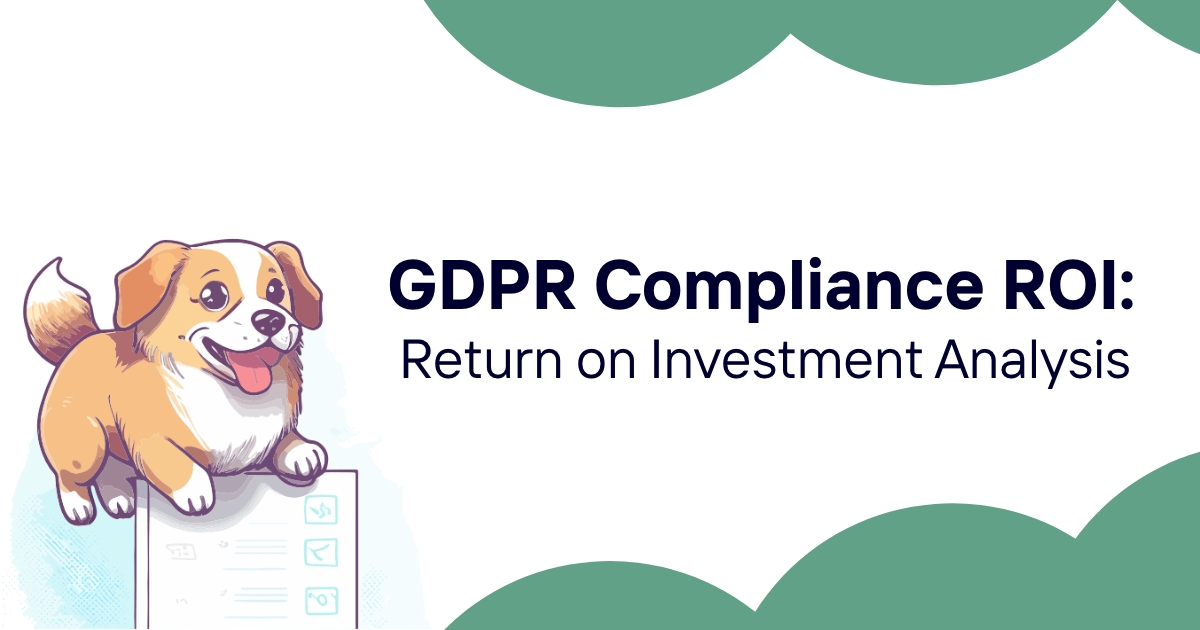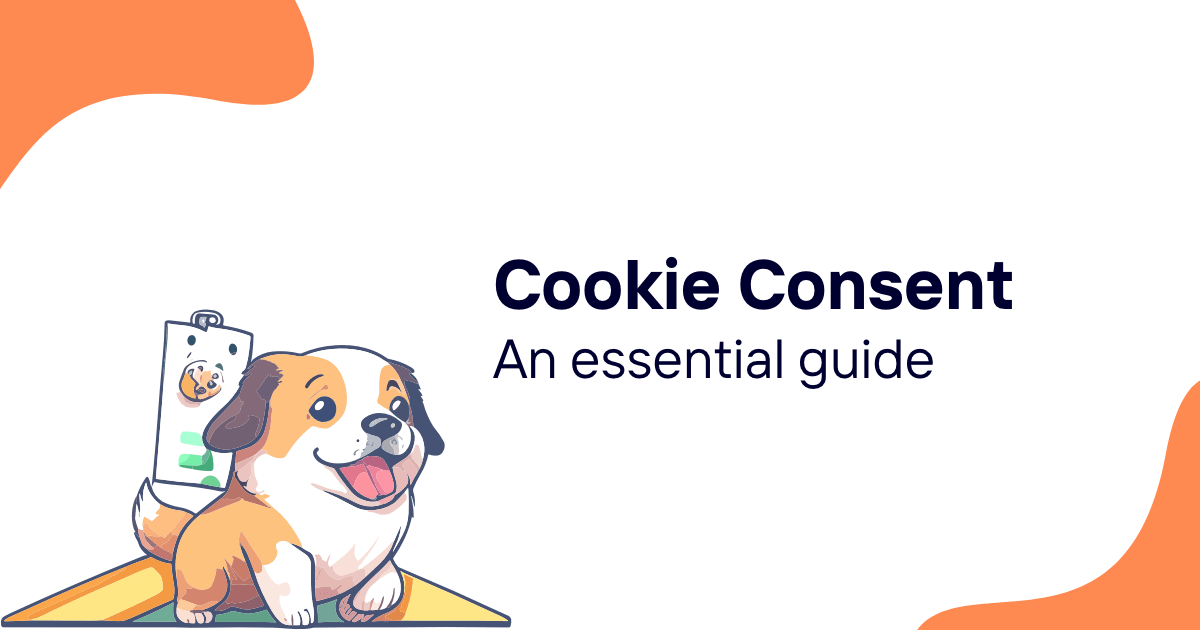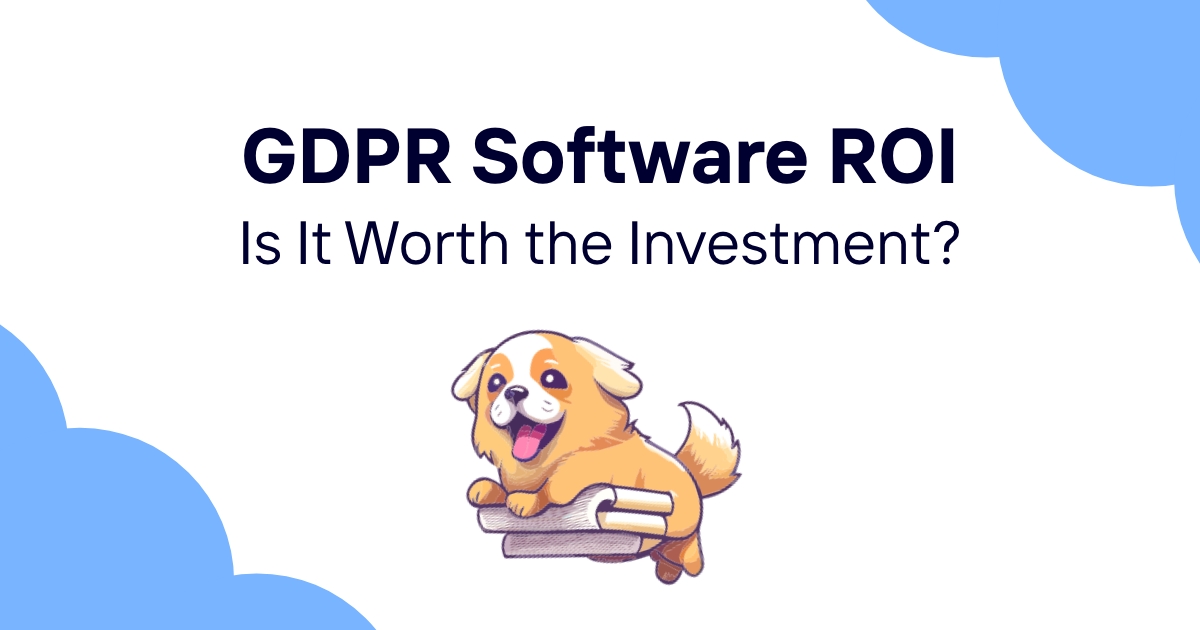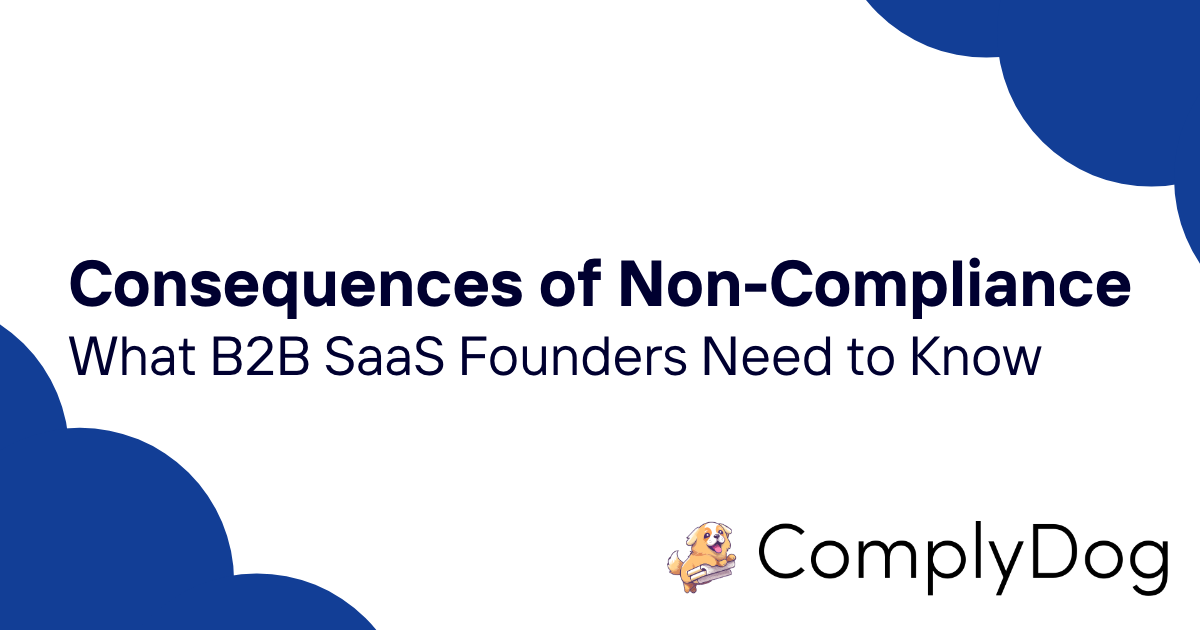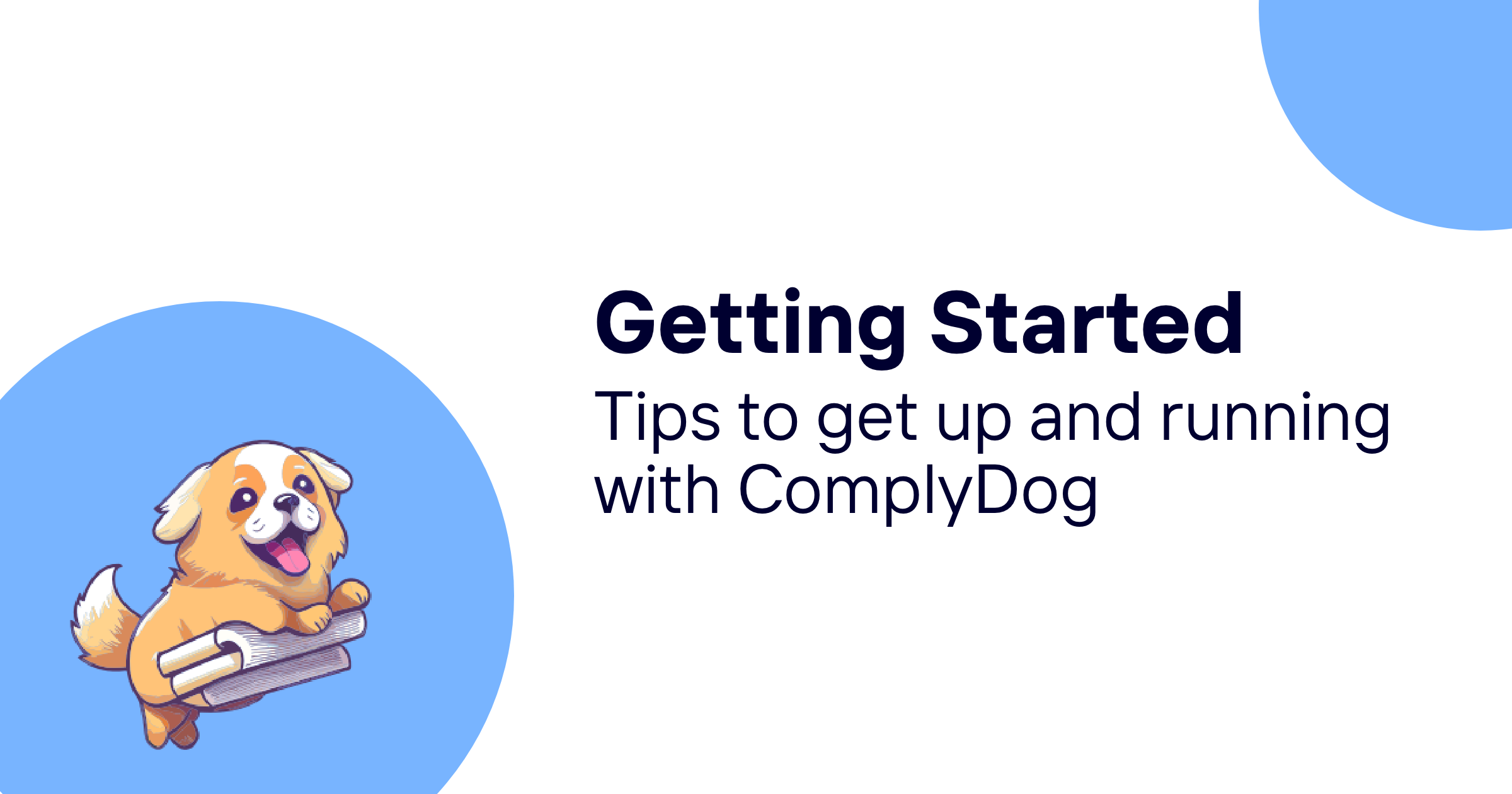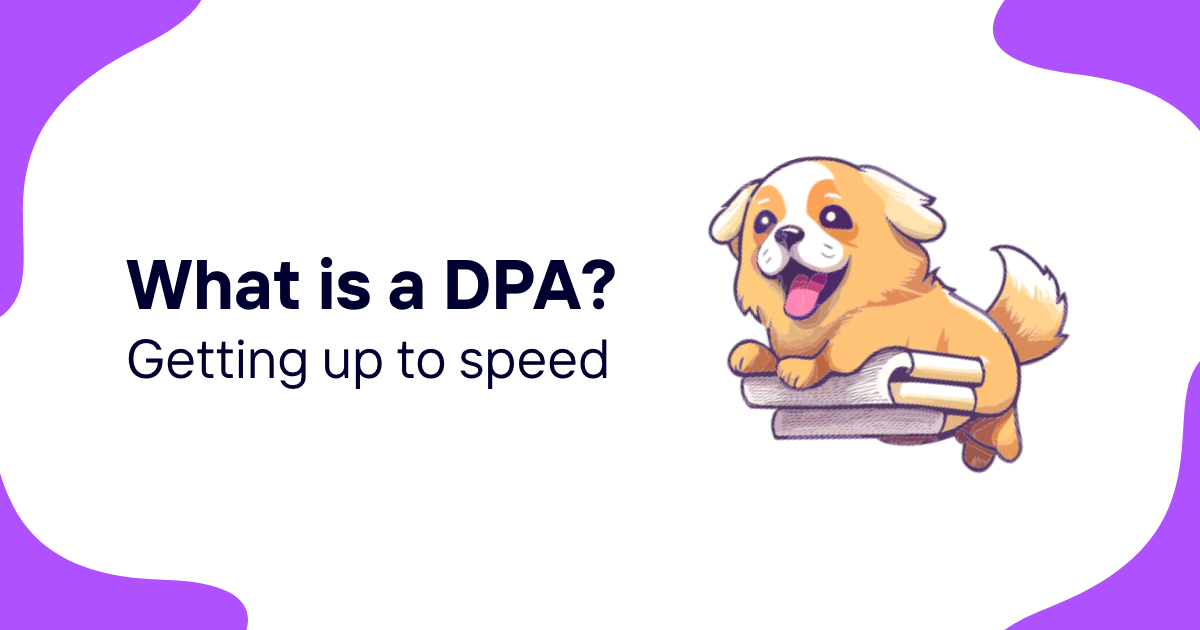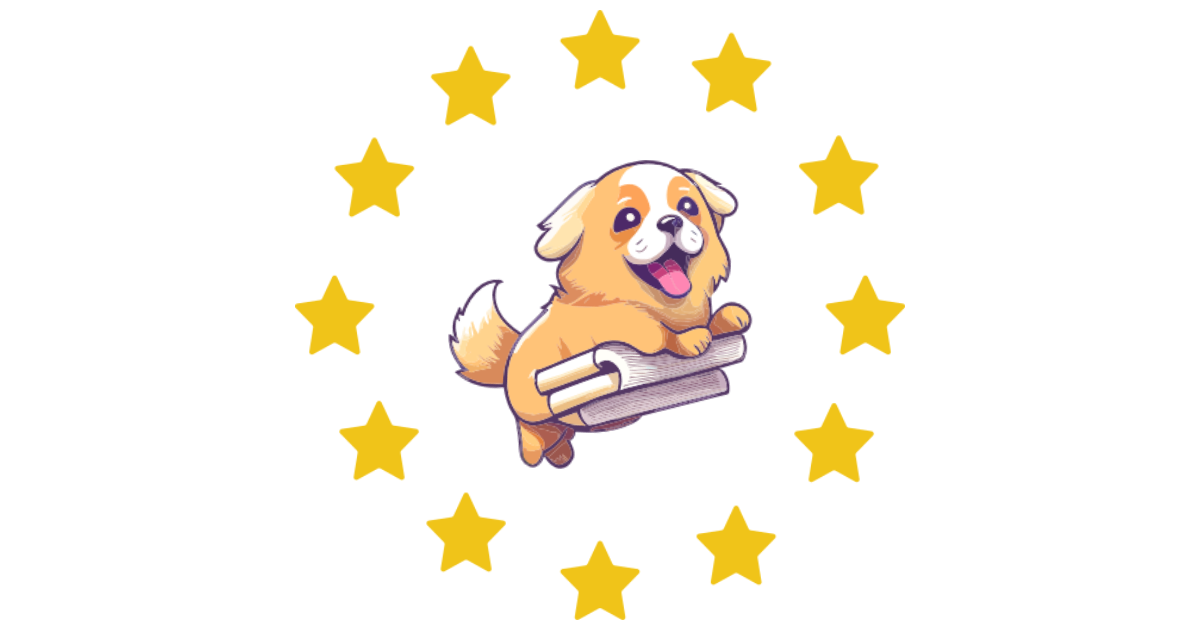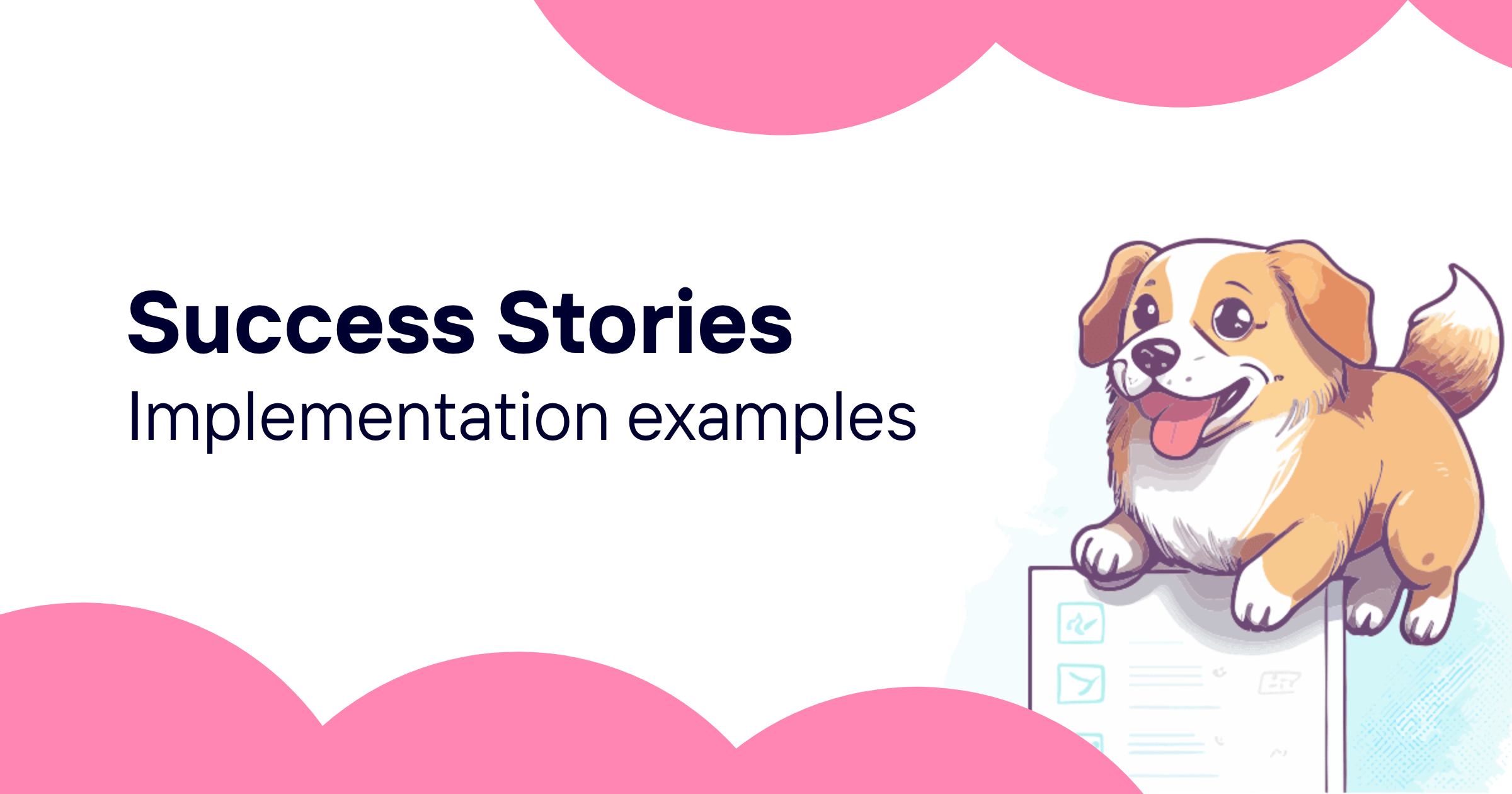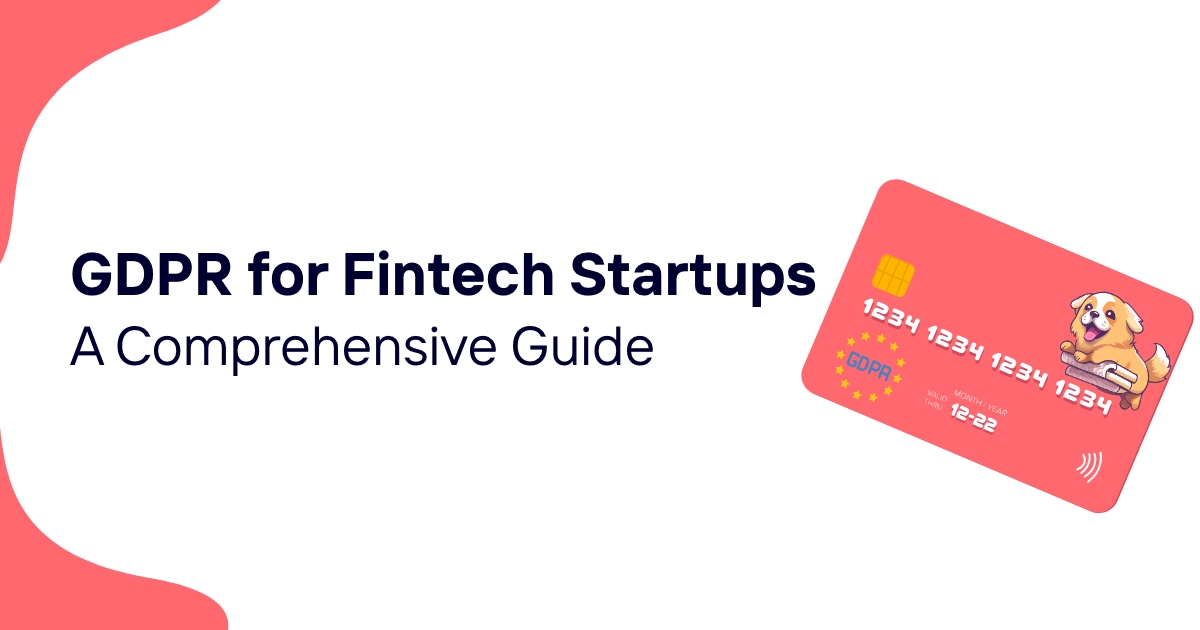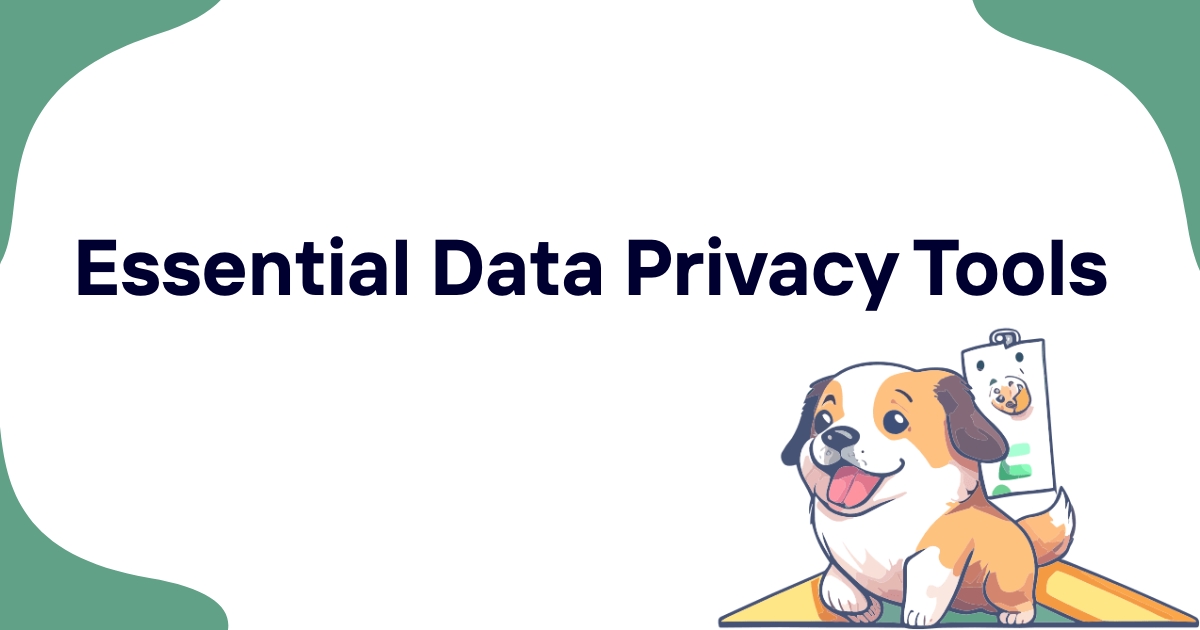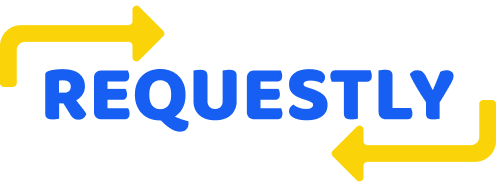GDPR compliance investments often face scrutiny from executives who view privacy as regulatory cost rather than business value creation. Many organizations implement minimal compliance while missing significant ROI opportunities through strategic privacy program development.
The challenge lies in quantifying intangible benefits like customer trust and brand reputation while accurately calculating compliance costs that span multiple business functions and technology investments over several years.
This guide provides comprehensive frameworks for calculating GDPR compliance ROI that demonstrate business value while supporting strategic investment decisions and privacy program optimization.
GDPR Compliance Investment Components
Technology Infrastructure Costs
Privacy management platforms typically cost $50,000-$500,000 annually depending on organizational size and feature requirements.
Consent management systems range from $10,000-$100,000 annually for comprehensive cookie and consent tracking across multiple touchpoints.
Data discovery and classification tools require $25,000-$200,000 annual investment for automated personal data identification and protection.
Security enhancement costs including encryption, access controls, and monitoring often range from $100,000-$1,000,000 for comprehensive protection measures.
Personnel and Professional Services
Dedicated privacy staff salaries range from $80,000-$200,000 annually for privacy officers and specialized compliance professionals.
Legal consultation costs typically require $50,000-$300,000 annually for ongoing privacy legal support and regulatory guidance.
Training and education programs cost $500-$5,000 per employee for comprehensive privacy awareness and specialized role training.
Implementation consulting services often require $100,000-$500,000 for initial privacy program establishment and system integration.
Process and Operational Costs
Privacy impact assessment procedures require 40-200 hours per assessment with internal staff time or external consultant costs.
Individual rights management systems and procedures typically cost $25,000-$150,000 annually for comprehensive request handling.
Vendor management and due diligence activities require ongoing staff time equivalent to 0.5-2.0 full-time employees.
Documentation and audit preparation activities consume significant internal resources equivalent to $50,000-$300,000 annually.
Compliance Monitoring and Maintenance
Ongoing compliance monitoring requires technology costs of $20,000-$100,000 annually plus dedicated staff time for oversight activities.
Regular assessment and audit costs range from $25,000-$150,000 annually for internal audits and periodic external assessments.
Regulatory update tracking and implementation require ongoing legal and compliance staff time equivalent to $30,000-$100,000 annually.
Continuous improvement initiatives typically require 10-20% of total privacy program budget for enhancement and optimization activities.
Direct Cost-Benefit Analysis
Penalty Avoidance Calculation
Maximum GDPR penalties of €20 million or 4% of global turnover create substantial financial exposure that compliance investments help prevent.
Average penalty amounts for medium-sized violations range from €500,000-€5,000,000 based on recent enforcement patterns across different jurisdictions.
Probability assessment of regulatory enforcement enables risk-adjusted penalty exposure calculation based on business activities and compliance maturity.
Administrative costs of regulatory investigations often exceed €100,000-€1,000,000 even when penalties aren't imposed due to response requirements.
Data Breach Cost Reduction
Average data breach costs range from $4.45 million globally with higher costs for organizations lacking comprehensive privacy programs.
Privacy program implementation typically reduces breach probability by 30-60% through better security controls and incident prevention.
Breach response costs including forensics, notification, and remediation often decrease by 40-70% when comprehensive privacy programs are established.
Regulatory breach notification efficiency improves significantly with established privacy procedures reducing compliance costs during incident response.
Operational Efficiency Improvements
Automated privacy controls reduce manual compliance tasks by 60-80% enabling staff reallocation to higher-value activities.
Streamlined data management through privacy programs often reduces data storage costs by 20-40% through better data lifecycle management.
Improved vendor management processes typically reduce procurement time by 25-50% through standardized privacy assessment procedures.
Enhanced data governance often improves data quality and accessibility reducing business inefficiencies across multiple functions.
Revenue Protection and Enhancement
Customer retention improvements of 5-15% often result from enhanced privacy protection and transparent data handling practices.
Premium pricing opportunities emerge when privacy leadership enables differentiated positioning in privacy-conscious market segments.
New business opportunities including international expansion become feasible with comprehensive privacy compliance capabilities.
Partnership opportunities with privacy-conscious organizations increase when robust privacy programs demonstrate compliance maturity.
Risk Mitigation Value Calculation
Regulatory Risk Quantification
Enforcement probability assessment considers business activities, data processing scope, and current compliance maturity to estimate regulatory exposure.
Penalty severity analysis evaluates potential fine amounts based on violation types and organizational characteristics using enforcement precedents.
Investigation cost estimation includes legal fees, staff time, and business disruption costs during regulatory enforcement proceedings.
Reputational impact quantification addresses brand damage and customer loss potential from high-profile privacy violations and enforcement actions.
Business Continuity Protection
Processing restriction orders from regulators can halt business operations creating costs far exceeding direct penalties.
Cross-border data transfer suspension risks affect international business operations requiring expensive alternative arrangements or operational changes.
Vendor relationship disruption from privacy incidents can require emergency procurement and implementation of alternative services.
Insurance claim enhancement through privacy programs often reduces cyber liability premiums by 10-30% while improving coverage terms.
Legal Liability Reduction
Class action lawsuit protection improves when comprehensive privacy programs demonstrate good faith compliance efforts and customer protection.
Individual damages claims typically decrease when privacy programs include proactive individual rights management and transparent communication.
Contractual liability with business partners often reduces when privacy programs enable compliance with customer privacy requirements.
Director and officer liability decreases when privacy governance includes appropriate board oversight and decision-making documentation.
Intellectual Property Protection
Trade secret protection often improves through privacy program security controls that protect confidential business information.
Customer data monetization opportunities require privacy compliance to enable lawful data use and sharing arrangements.
Competitive intelligence protection benefits from privacy program security measures that prevent unauthorized access to business information.
Innovation protection through privacy-by-design often creates competitive advantages while reducing intellectual property theft risks.
Brand and Trust Impact Assessment
Customer Trust Measurement
Customer satisfaction surveys often show 10-25% improvement in trust metrics following comprehensive privacy program implementation.
Net Promoter Scores typically increase by 5-15 points when customers perceive strong privacy protection and transparent data handling.
Customer lifetime value often increases by 15-40% when privacy programs build stronger customer relationships and reduce churn.
Word-of-mouth marketing improvements from privacy leadership can reduce customer acquisition costs by 20-50% in privacy-conscious segments.
Brand Reputation Value
Brand valuation increases from privacy leadership often range from 5-20% of total brand value for consumer-facing organizations.
Crisis resilience improves significantly when privacy programs enable rapid, transparent response to privacy incidents and regulatory challenges.
Media coverage quality improves when privacy programs provide positive differentiation rather than defensive compliance positioning.
Industry leadership recognition through privacy innovation often creates speaking opportunities and thought leadership platforms.
Market Positioning Benefits
Premium market positioning becomes feasible when privacy programs enable "privacy-first" marketing and competitive differentiation.
B2B sales advantages emerge when privacy programs enable compliance with customer privacy requirements and vendor assessments.
International market access improves when privacy programs meet global privacy standards enabling expansion into privacy-regulated markets.
Partnership opportunities with privacy-conscious organizations increase when robust privacy programs demonstrate compliance and value alignment.
Stakeholder Confidence
Investor confidence often improves when privacy programs demonstrate proactive risk management and regulatory compliance.
Employee satisfaction typically increases by 10-30% when privacy programs demonstrate organizational values alignment and ethical business practices.
Regulatory relationship quality improves when privacy programs enable cooperative engagement and proactive compliance communication.
Customer confidence in data handling creates competitive advantages in privacy-sensitive industries and geographic markets.
Operational Efficiency Gains
Process Automation Benefits
Automated consent management reduces manual processing time by 70-90% while improving accuracy and consistency.
Individual rights request automation typically reduces response time by 60-80% while ensuring comprehensive and accurate responses.
Data discovery automation eliminates manual data mapping requiring 500-2000 hours annually for comprehensive organizational coverage.
Compliance monitoring automation reduces audit preparation time by 50-80% while providing continuous compliance verification.
Data Management Optimization
Data minimization through privacy programs often reduces storage costs by 20-40% while improving data quality and accessibility.
Data retention automation eliminates manual deletion processes while ensuring appropriate data lifecycle management and compliance.
Data governance improvements through privacy programs often increase data accessibility by 30-60% while maintaining appropriate protection.
Business intelligence accuracy improves when privacy programs include data quality controls and validation procedures.
Vendor Management Efficiency
Standardized privacy assessments reduce vendor evaluation time by 40-70% while ensuring comprehensive privacy protection.
Contract negotiation efficiency improves when privacy programs include template agreements and standardized privacy requirements.
Vendor monitoring automation reduces ongoing oversight costs while ensuring continued compliance throughout vendor relationships.
Procurement cycle time often decreases by 25-50% when privacy requirements are standardized and integrated into procurement procedures.
Staff Productivity Improvements
Privacy training programs typically improve staff efficiency by 15-30% through better understanding of data handling requirements.
Reduced compliance uncertainty enables faster decision-making while avoiding delays from privacy-related questions and concerns.
Cross-functional coordination improves when privacy programs provide clear guidance and standardized procedures across business units.
Consider how operational efficiency integrates with comprehensive website compliance and broader privacy program optimization.
Competitive Advantage Analysis
Market Differentiation Value
Privacy leadership positioning enables premium pricing opportunities averaging 10-25% above competitors in privacy-conscious market segments.
Customer acquisition advantages emerge when privacy programs enable marketing messages that resonate with privacy-aware consumers.
Retention rate improvements of 15-35% often result from privacy programs that build stronger customer trust and loyalty.
Market share gains become possible when privacy programs enable expansion into segments where competitors lack appropriate privacy capabilities.
Innovation Enablement
New product development opportunities emerge when privacy programs enable compliant use of personal data for innovation and service enhancement.
Data collaboration possibilities with partners increase when privacy programs provide frameworks for lawful data sharing and joint development.
AI and machine learning initiatives become feasible when privacy programs include appropriate consent management and ethical use frameworks.
International expansion capabilities improve when privacy programs meet global privacy standards enabling market entry and operations.
Partnership and Business Development
Strategic partnership opportunities increase when privacy programs demonstrate compliance maturity and risk management capabilities.
Acquisition attractiveness improves when privacy programs reduce due diligence concerns and regulatory risk for potential acquirers.
Investment opportunities benefit when privacy programs demonstrate proactive risk management and competitive positioning advantages.
Customer contract wins often increase when privacy programs enable compliance with customer requirements and vendor assessment criteria.
Regulatory Relationship Benefits
Thought leadership opportunities emerge when privacy programs demonstrate innovation and best practices that influence industry standards.
Regulatory cooperation advantages result from privacy programs that enable proactive engagement and collaborative compliance approaches.
Industry influence increases when privacy programs provide expertise and experience that contribute to policy development and standard setting.
Enforcement precedent benefits often result when privacy programs demonstrate good faith compliance that influences regulatory enforcement approaches.
Long-Term ROI Projections
Five-Year Investment Analysis
Initial investment recovery typically occurs within 18-36 months through penalty avoidance, operational efficiency, and revenue enhancement.
Cumulative ROI projections often reach 200-500% over five years when comprehensive privacy programs create multiple value streams.
Investment scaling considerations address how privacy program costs and benefits change as organizations grow and processing activities expand.
Technology evolution planning ensures privacy investments remain current and effective as privacy technology and regulatory requirements evolve.
Scenario-Based Projections
Conservative ROI scenarios focus primarily on penalty avoidance and operational efficiency improvements typically achieving 150-250% five-year ROI.
Moderate ROI scenarios include brand value enhancement and competitive positioning benefits often achieving 300-600% five-year ROI.
Aggressive ROI scenarios incorporate full market positioning advantages and innovation enablement often achieving 500-1000% five-year ROI.
Risk-adjusted projections account for uncertainty in benefit realization while providing realistic expectations for privacy program investment returns.
Market Evolution Considerations
Regulatory expansion trends suggest increasing privacy compliance requirements that enhance the value of early privacy program investment.
Customer expectation evolution toward greater privacy protection increases the competitive advantage potential of privacy leadership.
Technology advancement in privacy tools often reduces privacy program costs while enhancing capabilities and ROI potential.
Industry maturation in privacy practices may reduce competitive advantages while maintaining operational efficiency and risk mitigation benefits.
Strategic Value Creation
Platform development for privacy-enabled services creates long-term revenue opportunities that compound initial privacy program investments.
Ecosystem leadership through privacy innovation can create sustainable competitive advantages and market positioning benefits.
Regulatory influence through privacy thought leadership often creates business development and partnership opportunities with significant value.
Cultural transformation through privacy programs often improves organizational decision-making and risk management across multiple business areas.
ROI Optimization Strategies
Investment Prioritization
High-impact, low-cost privacy initiatives provide immediate ROI while building foundation for more comprehensive program development.
Risk-based investment prioritization focuses resources on areas with highest regulatory exposure and penalty avoidance potential.
Quick win identification enables early ROI demonstration that builds stakeholder support for continued privacy program investment.
Phased implementation approach spreads costs over time while enabling incremental benefit realization and ROI optimization.
Benefit Maximization
Cross-functional integration ensures privacy programs provide value across multiple business functions rather than isolated compliance benefits.
Stakeholder engagement builds awareness of privacy program benefits while encouraging utilization and value realization.
Metrics and measurement programs track ROI realization while identifying optimization opportunities and additional value creation.
Continuous improvement processes enhance privacy program effectiveness while increasing ROI through efficiency gains and benefit expansion.
Cost Optimization
Technology consolidation reduces licensing costs while maintaining comprehensive privacy capabilities through integrated platforms.
Shared services implementation reduces duplicated privacy functions while maintaining appropriate controls and oversight.
Automation investment prioritization focuses on areas with highest manual effort reduction potential and ROI impact.
Vendor optimization through competitive procurement and contract negotiation often reduces privacy program costs by 20-40%.
Strategic Alignment
Business strategy integration ensures privacy investments support broader organizational objectives while maximizing value creation.
Innovation integration connects privacy capabilities with product development and business model innovation for enhanced ROI.
Partnership leverage uses privacy capabilities to enable business development and strategic relationships that create additional value.
Long-term planning ensures privacy investments remain aligned with business evolution while maintaining ROI optimization focus.
GDPR compliance ROI analysis demonstrates that strategic privacy programs create substantial business value while providing essential regulatory protection. Organizations that approach privacy as investment opportunity rather than compliance cost typically achieve better financial outcomes and competitive positioning.
Effective ROI optimization requires systematic measurement and continuous improvement that maximizes both tangible and intangible benefits from privacy program investments.
Ready to optimize your GDPR compliance ROI and demonstrate privacy program value? Use ComplyDog and access ROI calculation tools, benefit tracking capabilities, and optimization strategies that support maximum value creation from privacy program investments.
